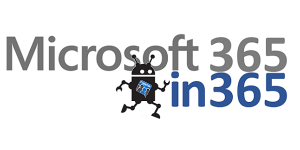Introducing Microsoft 365

3/365
At the July 2017 Microsoft Inspire conference, held in Washington DC, Microsoft CEO Satya Nadella introduced Microsoft 365, bundling Office 365, Windows 10, and Enterprise Mobility + Security into a single SKU. For most organizations, this bundle streamlines what they are likely already using today, but as Kirk Koenigsbauer, cvp for the Office team, wrote in his July 10th blog post introducing the new offering, this announcement “represents a fundamental shift in how we will design, build and go to market to address our customers’ needs for a modern workplace.”
The world is moving toward a shared vision of the digital workplace, and the entrance of Microsoft 365 is about providing an end-to-end solution, form the desktop and productivity applications to mobile and data protection, whether in the cloud or in our on-premises infrastructure. According to Microsoft, there are now more than 100 million commercial monthly active users (MAUs) of Office 365, and more than 500 million Windows 10 devices in use.
What is Included in Microsoft 365?
To address the commercial needs of the largest enterprise to the smallest business, Microsoft has introduced Microsoft 365 Enterprise and Microsoft 365 Business. The following video is from Inspire, with a demo of some of the solutions included within the offering, followed by an overview of Microsoft 365 by Satya:
From Kirk’s blog post, here are the details he provided around each offering:
Microsoft 365 Enterprise
Microsoft 365 Enterprise is designed for large organizations and integrates Office 365 Enterprise, Windows 10 Enterprise and Enterprise Mobility + Security to empower employees to be creative and work together, securely.
- Unlocks creativity by enabling people to work naturally with ink, voice and touch, all backed by tools that utilize AI and machine learning.
- Provides the broadest and deepest set of apps and services with a universal toolkit for teamwork, giving people flexibility and choice in how they connect, share and communicate.
- Simplifies IT by unifying management across users, devices, apps and services.
- Helps safeguard customer data, company data and intellectual property with built-in, intelligent security.
Microsoft 365 Enterprise is offered in two plans—Microsoft 365 E3 and Microsoft 365 E5. Both are available for purchase on August 1, 2017.
Microsoft 365 Enterprise is built on the foundation of the highly successful Secure Productive Enterprise, which grew seats by triple digits in the last year. Going forward, Microsoft 365 Enterprise replaces Secure Productive Enterprise to double-down on the new customer promise of empowering employees to be creative and work together, securely.
Microsoft 365 Business
Microsoft 365 Business is designed for small- to medium-sized businesses with up to 300 users and integrates Office 365 Business Premium with tailored security and management features from Windows 10 and Enterprise Mobility + Security. It offers services to empower employees, safeguard the business and simplify IT management.
- Helps companies achieve more together by better connecting employees, customers and suppliers.
- Empowers employees to get work done from anywhere, on any device.
- Protects company data across devices with always-on security.
- Simplifies the set-up and management of employee devices and services with a single IT console.
Microsoft 365 Business will be available in public preview on August 2, 2017. It will become generally available on a worldwide basis in the fall (CYQ3) of 2017, priced at US $20 per user, per month.
How this offering drives Business Value
To understand Microsoft’s messaging, it’s always good to examine some of the marketing campaigns surrounding a new product or service offering. While it doesn’t provide much detail, it does provide a good overview of how the company sees Microsoft 365 delivering business value:
The Partner Perspective
Since Microsoft Inspire focuses on partners (it was formerly known as the Microsoft Worldwide Partner Conference, or WPC), most of the focus of the messaging and positioning around Microsoft 365 was around the partner opportunity. If you watched the first video above, Satya went into detail about how the offering can help partners grow their businesses by streamlining the individual components into a single offering, and for many partners, allowing them to “extend their offerings into new areas, differentiate their offerings, simplify their sales processes, and increase their revenue.”
In Kirk’s blog post, he points to two Forrester Total Economic Impact™ Studies (commissioned studies conducted by Forrester Consulting), showing that Microsoft 365 Enterprise and Microsoft 365 Business increase average partner margins by an estimated 35 percent and 20 percent, respectively, over three years.
For more partner details on Microsoft 365, be sure to check out the new Microsoft 365 partner site.
For customers who would like to learn more about Microsoft 365, you can visit Microsoft.com/Microsoft-365.




